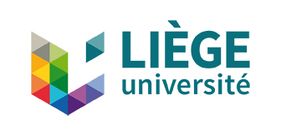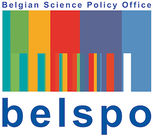GetDDM
An Open Framework for Testing Optimized Schwarz Methods for Time-Harmonic
Wave Problems
GetDDM1 combines GetDP
and Gmsh to solve large scale finite element
problems using optimized Schwarz domain decomposition methods.
Examples
for time-harmonic acoustic and electromagnetic wave problems implement
several families of transmission conditions: zeroth- and second-order
optimized conditions2-7, Padé-localized
square-root conditions8-9 and PML
conditions10. Several variants of the
double-sweep preconditioner10 are also
implemented.
For more information about these methods as well as the implementation, please
refer
to GetDDM:
an Open Framework for Testing Optimized Schwarz Methods for Time-Harmonic Wave
Problems.
Quick start
- Download the precompiled ONELAB
software bundle for Windows, Linux or macOS.
- Launch the app

- Open
models/GetDDM/main.pro
- Press
Run
Parallel computations
- Download the ONELAB
source code
- Compile
GetDP
and Gmsh
with MPI support
- Run the models on a computer cluster with MPI, e.g. the
waveguide3d
model on 100 CPUs, using:
mpirun -np 100 gmsh -setnumber N_DOM 100 waveguide3d.geo -
mpirun -np 100 getdp -setnumber N_DOM 100 waveguide3d.pro -solve DDM
The actual commands will depend on your particular MPI setup. Sample scripts
for SLURM
and PBS
schedulers are provided.
References
- B. Thierry, A.Vion, S. Tournier, M. El Bouajaji,
D. Colignon, N. Marsic, X. Antoine,
C. Geuzaine. GetDDM:
an Open Framework for Testing Optimized Schwarz Methods for Time-Harmonic
Wave Problems. Computer Physics Communications 203, 309-330, 2016.
- B. Després, Méthodes de Décomposition de Domaine pour les
Problèmes de Propagation d'Ondes en Régime Harmonique. Le Théorème de Borg
pour l'Equation de Hill Vectorielle, PhD Thesis, Paris VI University,
France, 1991.
- B. Després, P. Joly and J. Roberts, A domain decomposition
method for the harmonic Maxwell equations, Iterative methods in linear
algebra (Brussels, 1991), pp. 475-484, North-Holland, 1992.
- M. Gander, F. Magoulès and F. Nataf, Optimized Schwarz methods without
overlap for the Helmholtz equation}, SIAM Journal on Scientific Computing,
24(1), pp. 38-60, 2002.
- V. Dolean, M. Gander and L. Gerardo-Giorda, Optimized
Schwarz methods for Maxwell's equations, SIAM Journal on Scientific
Computing, 31(3), pp. 2193-2213, 2009.
- A. Bendali and Y. Boubendir, Non-Overlapping Domain
Decomposition Method for a Nodal Finite Element Method, Numerische
Mathematik 103(4), pp.515-537, (2006).
- V. Rawat and J.-F. Lee, Nonoverlapping Domain Decomposition
with Second Order Transmission Condition for the Time-Harmonic Maxwell's
Equations, SIAM Journal on Scientific Computing, 32(6), pp. 3584-3603,
2010.
- Y. Boubendir, X. Antoine and
C. Geuzaine. A
quasi-optimal non-overlapping domain decomposition algorithm for the
Helmholtz equation. Journal of Computational Physics 231 (2),
262-280, 2012.
- M. El Bouajaji, X. Antoine and
C. Geuzaine. Approximate
local magnetic-to-electric surface operators for time-harmonic Maxwell's
equations. Journal of Computational Physics 279 241-260, 2014.
- A. Vion and
C. Geuzaine.
Double sweep preconditioner for optimized Schwarz methods applied to the
Helmholtz problem. Journal of Computational Physics 266, 171-190,
2014.
Sponsors
GetDDM development was funded in part by the Belgian Science Policy (IAP P6/21
and P7/02), the Belgian French Community (ARC 09/14-02 and 15/19-03), the
Walloon Region (WIST3 No 1017086 ONELAB and ALIZEES), the Agence Nationale
pour la Recherche (ANR-09-BLAN-0057-01 MicroWave) and the EADS Foundation
(grant 089-1009-1006 High-BRID).
















